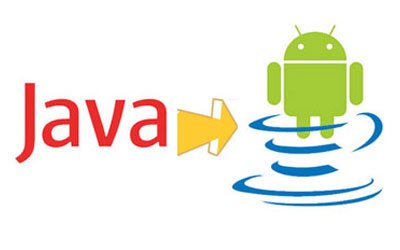 Backend Development
Backend Development
 Python Tutorial
Python Tutorial
 10 recommended articles about condition variables and threads
10 recommended articles about condition variables and threads
10 recommended articles about condition variables and threads
This article mainly introduces the producer and consumer operations of Python condition variables. It analyzes the concepts, principles, and related skills of thread operations in the form of specific examples. Friends in need can refer to the examples in this article. Understand the producer and consumer operations of Python condition variables. Share it with everyone for your reference, the details are as follows: Mutex lock is the simplest thread synchronization mechanism. To face complex thread synchronization problems, Python also provides Condition objects. Condition is called a condition variable. In addition to providing acquire and release methods similar to Lock, it also provides wait and notify methods. The thread first acquires a condition variable and then determines some conditions. If the condition is not met, wait; if the condition is met, perform some processing to change the condition, and notify other threads through the notify method. Other threads in the wait state will re-judge the condition after receiving the notification. This process is repeated continuously to solve complex synchronization problems. It can be considered that the Condition object maintains a lock (Lock/RLock) and a wai
1. Code examples of producer and consumer operations of python Condition object

Introduction: This article mainly introduces the producer and consumer operations of Python condition variables, and analyzes Python conditions in the form of specific examples. For the concepts, principles, and related techniques of thread operation, friends in need can refer to
2. Sample code that explains the principle of reentrant lock in Java

Introduction: 1. Overview This article first introduces the Lock interface, the class hierarchy of ReentrantLock and the lock function template class AbstractQueuedSynchronizer The simple principle of ReentrantLock, and then explain the internal principles of ReentrantLock by analyzing the lock method and unlock method of ReentrantLock, and finally make a summary. This article does not cover condition variables in ReentrantLock. 1.1. Lock interface The Lock interface is an abstraction of tools for controlling concurrency. It is better than using the synchronized keyword..

Introduction: During the thread synchronization process, there are also the following situations: Thread A needs to wait for a certain condition to be established before it can continue. If the condition is not established, thread A will be blocked, and thread B will wake up thread A to continue execution if the condition is established during execution. Use condition variables in the Pthread library to block waiting for a condition, or to wake up the thread waiting for this condition. Condition variables are represented by variables of type pthread_cond_t.
4. Python multi-threaded programming 5

##Introduction: Mutex lock is the simplest thread synchronization mechanism. The Condition object provided by Python provides support for complex thread synchronization issues. Condition is called a condition variable, except that it provides something similar to Lock...
Introduction:: Implement a thread pool: 1. The three most important synchronization mechanisms of threads 1. Semaphores 2. Mutex locks 3. Condition variables 2. Implement a wrapper class for each of the three synchronization mechanisms #ifdef LOCKER_H #define LOCKER_H#include #include /*Semaphore encapsulation*/ class sem { public:sem(){if( sem_init( &sem_like, 0, 0)){throw std
6. SQL Server uses triggers to update multi-table views
Introduction: Insert data in [ZHONGHE_TAB] 1 USE [SQL- LI] 2 -- Declare three variables to receive [average score], [total score], [Name], and a condition variable that controls the loop @I_WHILE_XUEHAO 3 DECLARE @I_WHILE_XUEHAO INT,@ZONGFEN DECIMAL(4, 1),@AVGFEN DECIMAL(3, 1),@XINGMING NVAR
7. How to dynamically display pictures in Cognos reports

Introduction: Users hope to dynamically display the product's Log in Cognos based on the product. This can be achieved through condition variables in Cognos. Each time Each product value corresponds to an image name. Doing this is more complicated. You must first define multiple variables
8. Python thread detailed explanation
Introduction: this article The article mainly introduces the detailed explanation of Python threads. This article explains in detail all aspects of thread knowledge, such as thread basics, thread status, thread synchronization (lock), thread communication (condition variables), etc. Friends in need can refer to the following
[Related Q&A Recommendations]:
linux - Why is the signal lost when synchronizing with condition variables?
linux - Doubts about condition variables in multi-threaded programming
java - Does await() of condition variables release the lock?
linux - How to understand the condition variables in thread synchronization?
The above is the detailed content of 10 recommended articles about condition variables and threads. For more information, please follow other related articles on the PHP Chinese website!

Hot AI Tools

Undresser.AI Undress
AI-powered app for creating realistic nude photos

AI Clothes Remover
Online AI tool for removing clothes from photos.

Undress AI Tool
Undress images for free

Clothoff.io
AI clothes remover

Video Face Swap
Swap faces in any video effortlessly with our completely free AI face swap tool!

Hot Article

Hot Tools

Notepad++7.3.1
Easy-to-use and free code editor

SublimeText3 Chinese version
Chinese version, very easy to use

Zend Studio 13.0.1
Powerful PHP integrated development environment

Dreamweaver CS6
Visual web development tools

SublimeText3 Mac version
God-level code editing software (SublimeText3)

Hot Topics
 1677
1677
 14
14
 1430
1430
 52
52
 1333
1333
 25
25
 1278
1278
 29
29
 1257
1257
 24
24
 Python vs. C : Learning Curves and Ease of Use
Apr 19, 2025 am 12:20 AM
Python vs. C : Learning Curves and Ease of Use
Apr 19, 2025 am 12:20 AM
Python is easier to learn and use, while C is more powerful but complex. 1. Python syntax is concise and suitable for beginners. Dynamic typing and automatic memory management make it easy to use, but may cause runtime errors. 2.C provides low-level control and advanced features, suitable for high-performance applications, but has a high learning threshold and requires manual memory and type safety management.
 Learning Python: Is 2 Hours of Daily Study Sufficient?
Apr 18, 2025 am 12:22 AM
Learning Python: Is 2 Hours of Daily Study Sufficient?
Apr 18, 2025 am 12:22 AM
Is it enough to learn Python for two hours a day? It depends on your goals and learning methods. 1) Develop a clear learning plan, 2) Select appropriate learning resources and methods, 3) Practice and review and consolidate hands-on practice and review and consolidate, and you can gradually master the basic knowledge and advanced functions of Python during this period.
 Python vs. C : Exploring Performance and Efficiency
Apr 18, 2025 am 12:20 AM
Python vs. C : Exploring Performance and Efficiency
Apr 18, 2025 am 12:20 AM
Python is better than C in development efficiency, but C is higher in execution performance. 1. Python's concise syntax and rich libraries improve development efficiency. 2.C's compilation-type characteristics and hardware control improve execution performance. When making a choice, you need to weigh the development speed and execution efficiency based on project needs.
 Python vs. C : Understanding the Key Differences
Apr 21, 2025 am 12:18 AM
Python vs. C : Understanding the Key Differences
Apr 21, 2025 am 12:18 AM
Python and C each have their own advantages, and the choice should be based on project requirements. 1) Python is suitable for rapid development and data processing due to its concise syntax and dynamic typing. 2)C is suitable for high performance and system programming due to its static typing and manual memory management.
 Which is part of the Python standard library: lists or arrays?
Apr 27, 2025 am 12:03 AM
Which is part of the Python standard library: lists or arrays?
Apr 27, 2025 am 12:03 AM
Pythonlistsarepartofthestandardlibrary,whilearraysarenot.Listsarebuilt-in,versatile,andusedforstoringcollections,whereasarraysareprovidedbythearraymoduleandlesscommonlyusedduetolimitedfunctionality.
 Python: Automation, Scripting, and Task Management
Apr 16, 2025 am 12:14 AM
Python: Automation, Scripting, and Task Management
Apr 16, 2025 am 12:14 AM
Python excels in automation, scripting, and task management. 1) Automation: File backup is realized through standard libraries such as os and shutil. 2) Script writing: Use the psutil library to monitor system resources. 3) Task management: Use the schedule library to schedule tasks. Python's ease of use and rich library support makes it the preferred tool in these areas.
 Python for Scientific Computing: A Detailed Look
Apr 19, 2025 am 12:15 AM
Python for Scientific Computing: A Detailed Look
Apr 19, 2025 am 12:15 AM
Python's applications in scientific computing include data analysis, machine learning, numerical simulation and visualization. 1.Numpy provides efficient multi-dimensional arrays and mathematical functions. 2. SciPy extends Numpy functionality and provides optimization and linear algebra tools. 3. Pandas is used for data processing and analysis. 4.Matplotlib is used to generate various graphs and visual results.
 Python for Web Development: Key Applications
Apr 18, 2025 am 12:20 AM
Python for Web Development: Key Applications
Apr 18, 2025 am 12:20 AM
Key applications of Python in web development include the use of Django and Flask frameworks, API development, data analysis and visualization, machine learning and AI, and performance optimization. 1. Django and Flask framework: Django is suitable for rapid development of complex applications, and Flask is suitable for small or highly customized projects. 2. API development: Use Flask or DjangoRESTFramework to build RESTfulAPI. 3. Data analysis and visualization: Use Python to process data and display it through the web interface. 4. Machine Learning and AI: Python is used to build intelligent web applications. 5. Performance optimization: optimized through asynchronous programming, caching and code



